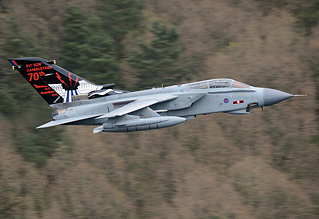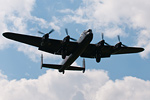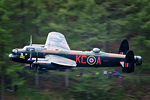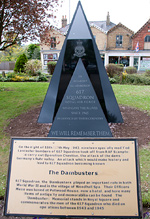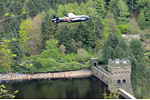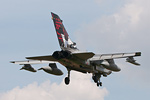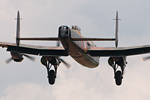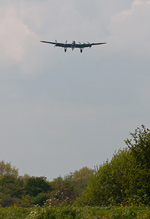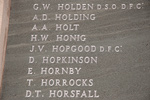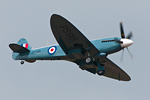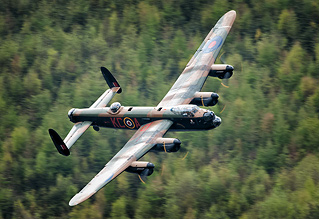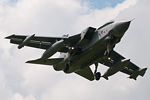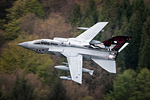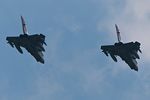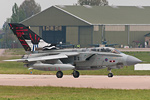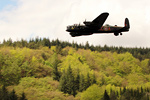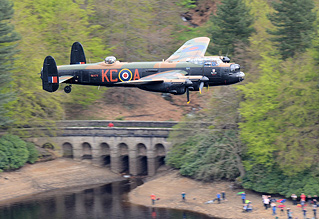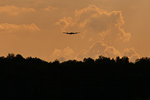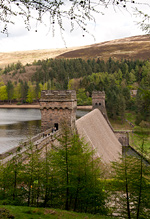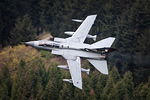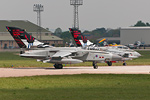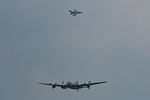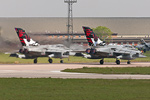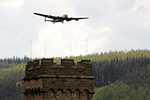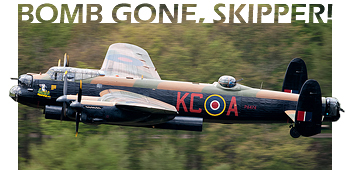
Dambusters 70th Anniversary
Thursday 16th May - Friday 17th May 2013
May 2013 marked the 70th anniversary of one of the most iconic, and legendary feats of military aviation the world has ever known. The story of the Dam Busters is the tale which has it all - the white-coated boffin's genius, his fantastic wonder weapon, the brave men and their flying machines hugging the contours of the earth as they achieved what many felt was not only impossible, but suicidal.
UK Airshow Review's , a keen student of Operation Chastise, reflects on the raid and this month's commemorations. Photography by & .
"This story shall the good man teach his son" - Henry V, William Shakespeare.
The above quote refers, of course, not to the great Dams Raid - Operation Chastise - of World War II, but to the Battle of Agincourt, and yet the words have applied equally for some seven decades now. To be an aviation enthusiast is to know, chapter-and-verse, the events of the night of May 16/17, 1943. The night that 617 squadron flew its first operational sortie, and flew into legend.
We've all seen the film, most will probably have read the Paul Brickhill book upon which it is based, and for the most part the movie is pretty accurate (the only major fabrication is the artistic licence used which suggests that Gibson got the spotlamp height-fixing idea from a West End theatre, which is actually nonsense). The Dam Busters is a film which has shaped our idea of what the raid was like, for unlike D-Day, or indeed the Battle of Britain, no archive newsreel of the actual attack exists.
The idea was, in short, to attack the great dams of Western Germany - those of the Ruhr valley, a crucial, and naturally heavily-defended part of Adolf Hitler's military production machine. By starving industry of water, steel production would be interrupted, not to mention the chaos of billions of tons of water cascading through the vicinity, sweeping away and waterlogging airfields, agriculture, and indeed the homes of the enemy.
But how to do it? Dams, as is superbly explained by Michael Redgrave as the inventor Barnes Wallis in the film, were impossible to even scratch with the conventional weapons of the day. Torpedo nets prevented attack by submarine, and no aircraft at the time was big enough to carry a powerful enough explosive device that far into Germany, unless the bomb could be detonated against the dam wall. And that's where the genius comes into it.
After famously conducting experiments in his back garden with his children's marbles, Wallis reasoned that a relatively light four-ton bomb could be made to bounce over the dam's defences, given the correct release mechanism, and come to rest against the wall itself. Then the explosion would harness the pressure of the surrounding water to amplify the strength of the explosive, producing enough force to knock down the solid masonry of the dam.
His employers Vickers liked the idea, and eventually the War Ministry and Ministry of Aircraft Production did too. Wallis even managed to convince Bomber Command's Arthur "Bomber" Harris himself, who grudgingly agreed to let his men carry out the raid.
Wing Commander Guy Gibson, even then, at 24 a veteran of well-over 100 sorties was selected to form the squadron - Number 617 - at RAF Scampton in Lincolnshire, and staffed it with the finest crews Bomber Command had to offer. Training began before the bomb was even complete - and the squadron had to be ready to strike in just eight weeks - flying at 60ft, at night, over water. Their airmanship, and mastery of Avro's Lancaster, would never be more tested.
And so to the raid itself. Three dams were designated as the main targets. The Eder near to Frankfurt, the Möhne, east of Dortmund, and the Sorpe, close to the small town of Sundern. Other, smaller dams were assigned as possible alternative targets for the attackers.
On the night of May 16th, into May 17th 1943, some nineteen Lancasters left Scampton in three waves. Six aircraft were lost on the outward journey, to a mix of enemy fire, and the perils of transitting at such extreme low-level. A further five aircraft, led by Gibson in "G George" attacked the Möhne. Two scored direct hits - the aircraft "Dinghy" Young's "A Apple" and David Maltby's "J Johnny", eventually causing a breach in the dam wall.
Four Lancasters went on to attack the Eder. Two scored hits, with Les Knight's "N Nancy" credited as the aircraft to cause the catastrophic damage to the structure.
The third wave's target was the Sorpe - a dam different in design, which required the bomb to be dropped on top of it, rather than bounced against the wall. Only three aircraft reached this target, two of them managing to score hits, but only damaging the dam without causing a serious breach.
The return flight, again keeping low, but by now having to also remain unseen as morning broke, saw a further two aircraft lost.
Of the nineteen 'Lancs' which had set out on the mission, just eleven returned, with a loss of 53 aircrew. Three men had baled out safely and were taken prisoner-of-war.
The success or failure of the mission, militarily, is a subject of much discussion - and far too detailed to be gone into here. The propaganda value of the raid, and the short-term disruption it caused to Germany can not, however, be disputed.
And so back to 2013. The week of celebrations, of flypasts and commemorations has seen events at Scampton, Cosford and Hendon, as well as an evocative flypast of the Battle of Britain Memorial Fight's Lancaster I, PA474, over the dam at Derwent Water in the Peak District near Sheffield - one of the dams used by 617 during training for the mission.
Last year's unveiling of the Bomber Command memorial in Green Park, London appears to have seen a sea-change in how the "Bomber Boys" are perceived now, as, like in 2012, the media embraced this occasion too - warmly and widely. The BBC carried an excellent live broadcast from Scampton, anchored by Dan Snow, featuring veterans, historical insight, and of course a display by the BBMF's grand old dame herself. Local radio in Lincolnshire carried real-time "updates" as they would have happened, through the night, while the Royal Air Force's Twitter account did something similar. At last it seems, we no longer have to feign shame at what Bomber Command did in the name of our country and global freedom.
That we still remember, and are still amazed by the achievements of Wallis, Gibson, and the men of 617 says much for the enduring nature of this story. A tale almost stranger, and certainly more fantastic, than most fiction. The stuff of action heroes. Except, in this case the men were real.
"Apres moi, le deluge" - After me, the flood - remains to this day the motto of the modern-day 617 Squadron. And that will, rightly, never change.

